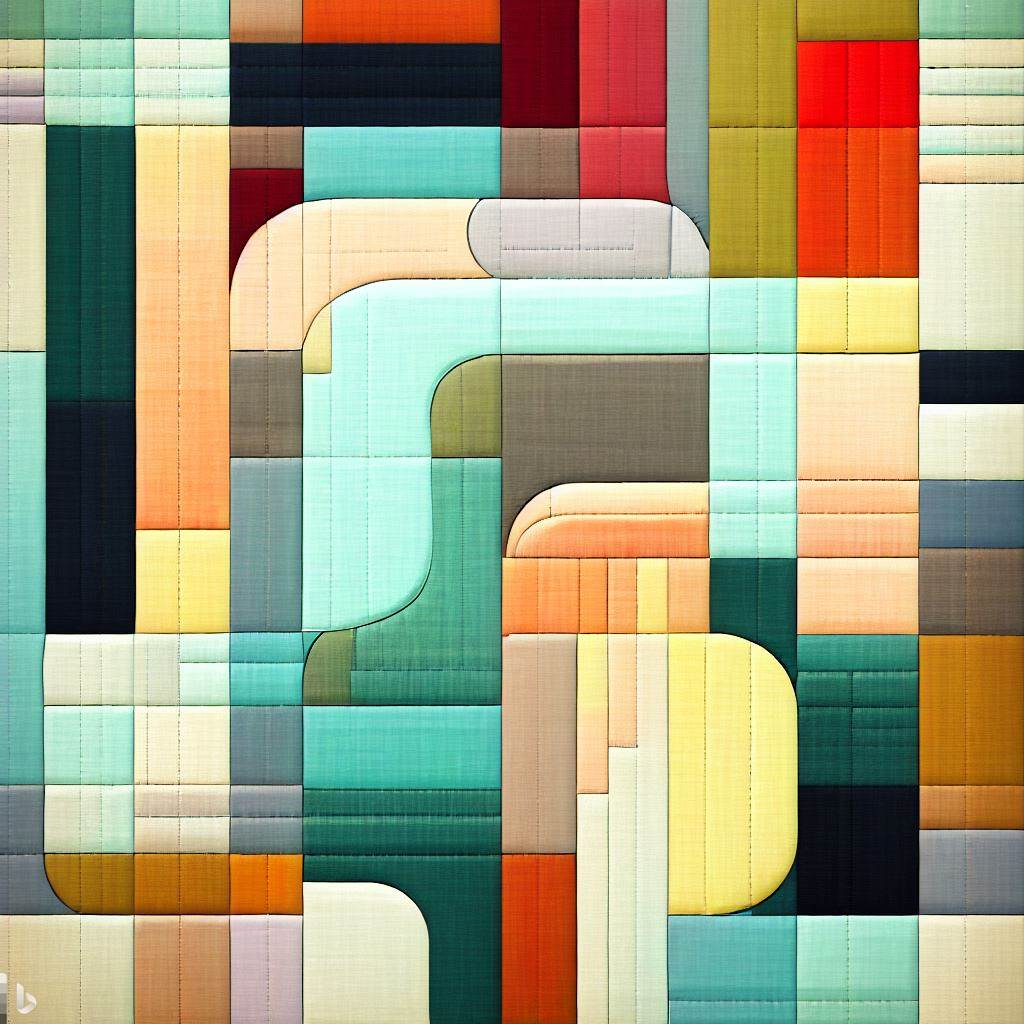The Resurgence of Quilting: Modern Artists Reimagining the Craft
After waning mid-century popularity, quilting has experienced an extraordinary resurgence thanks to contemporary artists fearlessly reimagining the possibilities of the medium. By fusing traditional techniques with avant-garde ideas and materials, they have unleashed an unprecedented wave of innovation, diversity, and excitement around contemporary quilting. Their openness to experimentation expands quilting’s identity, making the art form feel compellingly relevant for 21st century visual culture. Yet even as they push boundaries, these visionaries honor the past. The resulting explosive revival is reshaping perceptions about quilting’s capacity for creative expression.
Waning Popularity Spurs Innovation
By the mid-20th century, quilting had declined so steeply in popularity it nearly became a lost art. But this trajectory spurred conceptual artists to radically transform quilts into serious artistic statements.
Decline of Quilting Tradition
With the accessibility of mass-produced blankets, quilting became less essential by the 1950s. Lack of necessity contributed to waning interest and practice. Technical skills floundered.
Lack of Recognition as an Art Form
Once quilting diminished, it was largely viewed as an outdated domestic craft rather than legitimate artistic medium. Very few acknowledged creative potential.
Reclamation by Avant-Garde Artists
Intrigued by quilts’ cultural associations, avant-garde artists like Robert Rauschenberg began incorporating quilted fabric into mixed media works in the 1960s and 70s. This planted seeds.
Formation of the Studio Art Quilt Movement
By the 1980s, artists like Michael James created conceptual, improvisational quilts to be displayed as serious artwork rather than bedcovers. Their forward vision branded art quilts.
Proliferation of Art Quilt Exhibits and Publications
Institutions like the Renwick Gallery and Quilt National exhibitions gave art quilts credibility through major exhibits. Conferences and magazines promoted innovation.
Reviving Heritage Techniques with Modern Sensibilities
Postmodern quilters blend devotion to antique methods with contemporary design thinking to make heritage techniques creatively relevant today.
Highlighting Hand Work and Natural Dyes
Returning to laborious handwork methods using naturally dyed fabrics ties to sustainable ideals and simpler living currently prized. The rough-hewn look has modern appeal.
Traditional Block Patterns and Appliqué
Artists instill traditional patchwork blocks like Log Cabin variations and Baltimore Album florals with an off-beat colorful spin that feels fresh and lively. Patterns connect past to present.
Improvising Traditional Design Rationale
Playing with the proportions and precision of typical block patterns reflects modern, deconstructed design thinking. Whimsical improvisation reinvigorates rules.
Expanding the Color Palette Dramatically
Classic quilts utilized sober color palettes. Contemporary quilters amplify color distinctiveness and vibrancy, reflecting digital-age visual intensity and maximalism. Vibrant hues feel youthful.
Scaling Up in Size and Drama
Antique quilts were bed-sized and intended for utility. Art quilters scale up quilts for wall art with graphic, oversized designs. Their assertive visual presence demands attention.
Pioneering Avant-Garde Quilting Techniques
Openness to unusual materials and unconventional techniques empowers quilters to capture almost any artistic vision or concept through fiber art quilts.
Fused and Raw-Edge Appliqué
Fusing fabric pieces using fusible web or leaving edges unfinished and visible provides instant gratification compared to careful needleturn appliqué. The raw look feels arty.
Painting and Printing on Fabric
Quilters now easily print photos, saturated graphic images, and painterly art directly onto fabric panels using digital transfers and artful printing methods. Vast imagery possibilities emerge.
Embellishment and Mixed Media
Adding beads, buttons, charms, stitching, paint, and unconventional materials like wood, metal, or resin expands quilts into heavily layered mixed media collages with tactile depth.
Experimental Construction
Deconstructing traditional construction methods by leaving extreme gaps in piecing, using transparencies, or forgoing standard patterns yields abstract dimensionality and movement. Unexpected forms arise.
Conceptual Themes and Social Commentary
Reimagined art quilts can powerfully communicate visual concepts from scientific themes to cultural critiques through layered metaphors. Meaning transcends function.
Cultural Diversity and Inclusion Expanding Perspectives
The quilting resurgence brings diversity of age, gender, ethnicity, and background that enrich collective perspectives and designs.
Engaging New Generations of Makers
A huge youth movement is embracing quilting through modern designs and sharing on social media. Millennial and Gen Z quilters are passionate ambassadors attracting peers.
Honoring Marginalized Makers Past and Present
Exhibits are showcasing quilts by historically underrepresented groups like Indigenous, Latino, and African American quilters. Inclusive recognition affirms unheard voices.
Gender Inclusivity Within a Traditionally Female Art Form
Whereas quilting has traditionally been female-dominated, more men are discovering joy in fiber work. Gender assumptions are dissolving through shared passion.
Multicultural Motifs and Storytelling
Quilters from diverse backgrounds are incorporating cultural motifs into narrative quilts that express unique identities. Their heritage enriches quilting traditions.
A Creative Movement Powered by Inclusion and Innovation
Today’s quilting renaissance flourishes because of eagerly embracing what was nearly lost: cherished techniques, unheard stories, and realization of the medium’s limitless possibility. With each stitch we continue to expand the quilt ever outward in spiraling motifs, encompassing new fabrics of being. Its revived energy beckons all to pick up needle and thread and make their mark.
